Aquatic Invertebrates
Media
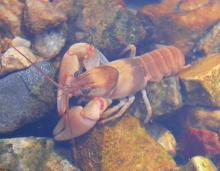
Species Types
Scientific Name
Faxonius luteus (formerly Orconectes luteus)
Description
The golden crayfish varies in color from olive green to golden yellow. Many body parts are trimmed with red. A dark band crosses the head just in front of the cervical groove, and another crosses the carapace at its junction with the abdomen. It's a wide-ranging species.
Media
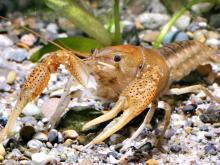
Species Types
Scientific Name
Procambarus acutus
Description
Adult White River crawfish are usually a deep burgundy red with a black V-shaped stripe on the abdomen. Juveniles are gray with dark spots scattered over the carapace. In Missouri, this species mostly occurs in the Bootheel and north along the Mississippi River.
Media
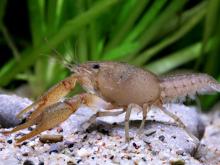
Species Types
Scientific Name
Procambarus viaeviridus
Description
Adult vernal crayfish are rusty red with a blackish wedge-shaped central stripe along the length of the abdomen. In Missouri, this species occurs only in our southeastern swamps and is usually only seen in February and March.
Media
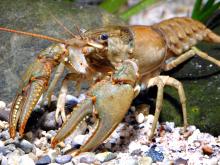
Species Types
Scientific Name
Faxonius virilis (formerly Oronectes virilis)
Description
The virile crayfish is large, reddish brown or green, and lacks prominent markings. The pincers are green with orange tips and are studded with whitish knobs. Paired dark blotches run along the abdomen. This species is widespread.
Media

Species Types
Scientific Name
Procambarus clarkii
Description
Adult red swamp crawfish are dark red (nearly black on the carapace) and have a wedge-shaped black stripe on the abdomen. Juveniles are a uniform gray, sometimes overlain by dark wavy lines. In Missouri it lives in the Bootheel.
Media
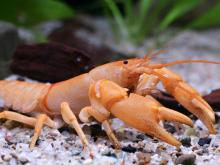
Species Types
Scientific Name
Cambarus hubbsi
Description
Hubbs' crayfish is powerfully built, olive tan or reddish brown, with a narrow blackish band where the carapace and abdomen join. It has a limited range within the Ozarks of southern Missouri and northern Arkansas.
Media
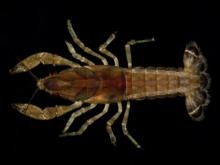
Species Types
Scientific Name
Faxonella clypeata
Description
The shield crayfish is small and tan, with a pattern of paired blackish dashes along the surface of the carapace and abdomen. The pincers are narrow, with short, abruptly tapering fingers. In Missouri it occurs only in our southeast counties.
Media
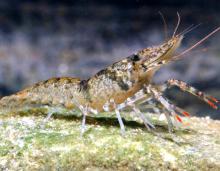
Species Types
Scientific Name
Faxonius lancifer (formerly Orconectes lancifer)
Description
The shrimp crayfish is medium-small, light reddish brown to gray, and thickly dusted with darker specks. Its noselike rostrum is unusually long, with the tip longer than the base, and the pincers are narrow and weak. It is found in the Bootheel.
Media
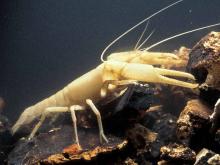
Species Types
Scientific Name
Cambarus setosus
Description
The bristly cave crayfish is a whitish crayfish with small, unpigmented eyes and long, slender pincers with noticeable setae (bristles). It lives in caves in the Springfield Plateau region of the Ozarks.
Media
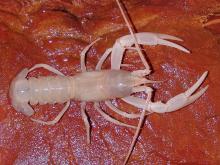
Species Types
Scientific Name
Orconectes stygocaneyi
Description
One of three species of cave crayfish in Missouri, the Caney Mountain cave crayfish is known from only one location. Like many other cave invertebrates, this species is whitish and is blind.
See Also
About Aquatic Invertebrates in Missouri
Missouri's streams, lakes, and other aquatic habitats hold thousands of kinds of invertebrates — worms, freshwater mussels, snails, crayfish, insects, and other animals without backbones. These creatures are vital links in the aquatic food chain, and their presence and numbers tell us a lot about water quality.





















